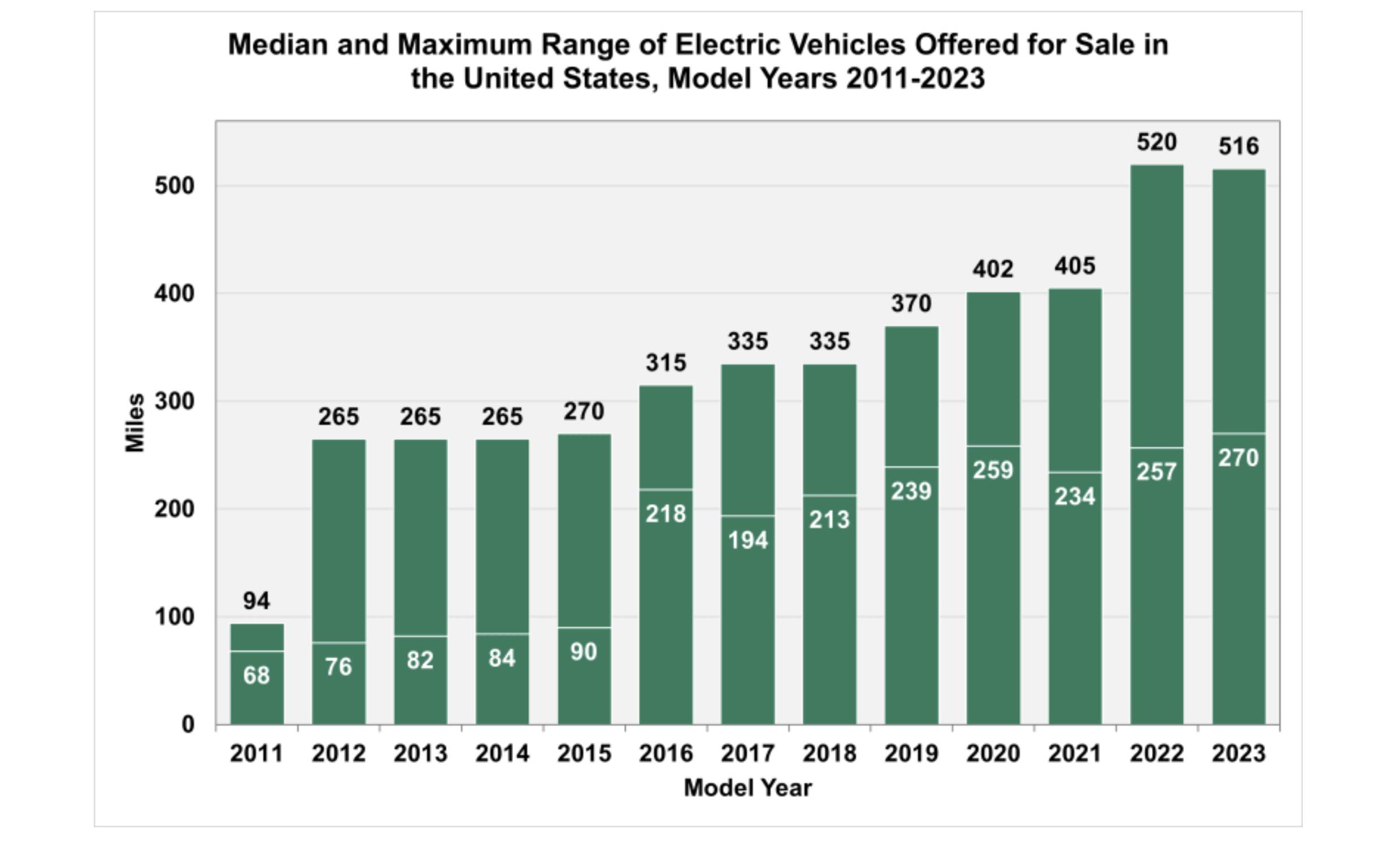The Department of Energy’s recent revelation that 270 miles stands as the median rated range for new 2023-model-year electric vehicles (EVs) has sparked discussions about the optimal range necessary for wider EV adoption. While studies over the past decade have suggested a 300-mile range could be a sweet spot for increasing EV interest, the landscape has evolved rapidly, with Lucid’s 516-mile rating for the 2023 Lucid Air Grand Touring leading the pack.
Efficiency, rather than sheer range, is emerging as a critical factor in evaluating EV performance. Simply installing larger battery packs doesn’t necessarily enhance an EV’s capabilities, as the added weight poses challenges, and the environmental impact of manufacturing larger batteries must be considered.
The push for higher EV ranges, notably surpassing 300 miles, gained momentum in recent years. Tesla played a pioneering role with the Model 3 Long Range offering 310 miles in 2017, and the Model Y achieving a 316-mile rating in 2020. The 2021 Ford Mustang Mach-E marked a significant milestone as the first non-Tesla model to reach 300 miles of EPA-rated range.
The 2022 model year witnessed a notable increase in EV models with 300 miles or more of range, reaching a total of 14. However, these range numbers may not always align with real-world scenarios, with factors such as cold weather impacting actual driving distances. Tesla’s recent downward revision of range numbers suggests a recalibration toward more realistic figures, moving away from optimistic adjustments.
While the DOE’s data highlights the equal distribution of EVs above and below 270 miles, the actual sales volume and consumer preferences may present a different picture. As the EV landscape continues to evolve, finding the right balance between range, efficiency, and practicality remains a crucial aspect for the future of electric mobility.

